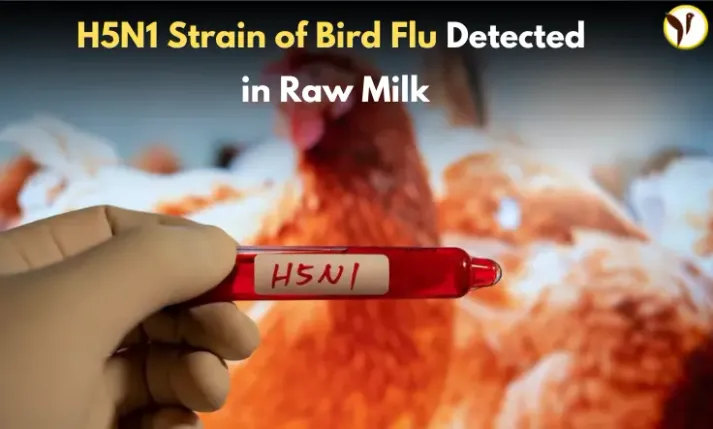In a recent announcement by the World Health Organization (WHO), the H5N1 strain of avian influenza has been identified in raw milk sourced from infected animals. This revelation has sparked concerns regarding the potential transmission of the virus through dairy products. The WHO report, released on Friday, highlights the unprecedented detection of the virus in raw milk samples, raising questions about its survivability in this medium.
Avian influenza, commonly known as bird flu, is a viral infection primarily affecting birds, but recent outbreaks have shown an alarming trend of transmission to mammals. Since its emergence in 1996, the H5N1 strain has caused significant mortality among poultry populations worldwide. However, the recent surge in cases among mammals, including cows and goats, has caught experts off guard.
Notably, the United States witnessed its first human case of avian influenza contracted from a cow in Texas. This development underscores the evolving nature of the virus and its ability to cross species barriers. Dr. Wenqing Zhang, head of the WHO's global influenza program, emphasized the concerning pattern of transmission, indicating instances of bird-to-cow, cow-to-cow, and cow-to-bird infections.
Furthermore, the detection of H5N1 in raw milk adds another dimension to the ongoing crisis. Despite assurances from health authorities regarding the safety of the commercial milk supply, the high concentration of the virus in raw milk raises alarm bells. While pasteurization is known to effectively neutralize the virus, questions linger about the potential risks associated with unpasteurized dairy products.
It is imperative for consumers to practice caution and adhere to safe food practices, including the consumption of pasteurized milk and milk products. Dr. Zhang stressed the importance of vigilance in mitigating the spread of the virus through contaminated food sources.
In terms of human cases, the WHO reported a total of 889 cases with 463 fatalities across 23 countries since 2003. However, recent cases in Europe and the United States have exhibited milder symptoms, alleviating concerns of widespread human transmission. Despite this, there is no room for complacency, as the threat of a pandemic looms large.
Dr. Zhang reassured the public about ongoing efforts to develop vaccines tailored to combat the H5N1 virus. With candidate vaccine viruses already in the pipeline, the global health community remains prepared to respond swiftly to any escalation of the situation.







